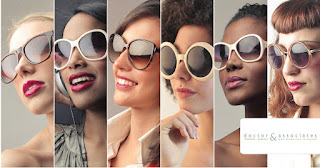Cataracts affect more than 24 million
Americans age 40 and older and are the most common cause of treatable vision loss in
people 55. Cataracts generally develop
slowly and painlessly, but sooner or later, you are bound to experience one or
more of the following symptoms:
>Blurred Vision-Blurriness is one of the earliest and most common
signs of cataracts. Changing your prescription may help, but it can’t correct
the problem permanently.
>Faded or Dull Colors-Colors appear less vivid than they once were.
Certain shades can become more difficult to differentiate from one another.
>Poor Night Vision-At first, you may simply need more light to read.
Over time, you may find it more difficult to see objects in the dark, particularly
when driving.
>Sensitivity to Light-Lights may seem uncomfortably bright, or
appear to have halos around them.
Left untreated, cataracts have the potential to cause a significant loss of vision and compromise your safety and mobility. The decision to have cataract surgery & lens implants is a personal one that you and your eye doctor can decide based on how much your cataracts interfere with your daily activities. Some things to consider, when considering cataract surgery:
·
Can you see to safety do your job and to
drive?
·
Do you have problems reading or watching
TV?
·
Is it difficult to cook, shop, climb
stairs or take medications?
·
Do vision problems affect your
independence?
·
Do bright lights make is harder to see?
If you or someone you know is experiencing cataract
symptoms such as cloudy foggy vision, glare or difficult night driving and
would like to learn more about cataract surgery & lens implants please
call Doctor & Associates-203-227-4113, visit Doctor
& Associates in Fairfield County, or Facebook to
schedule an appointment.
Doctor & Associates offices are conveniently located at 129 Kings Highway North, Westport, Connecticut 06880, 195 Danbury Road, Wilton, Connecticut 06897 and 148 East Avenue, Norwalk, Connecticut 06851.


